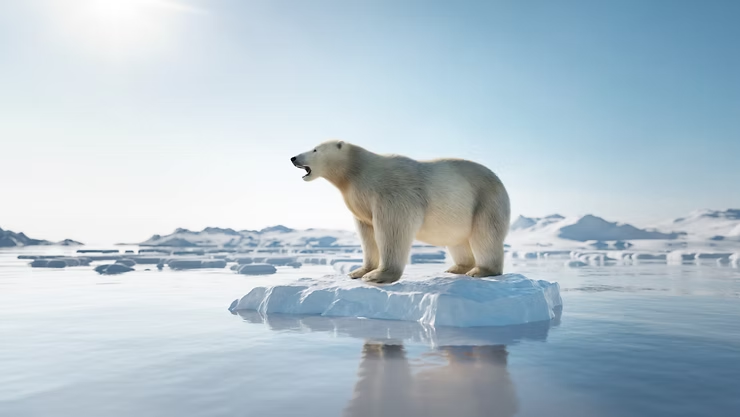Polar Bears: The Giants of the Arctic
Polar bears are the largest land carnivores and have adapted to survive in the cold, icy Arctic environment. They are powerful swimmers, excellent hunters, and social creatures with strong maternal instincts. However, climate change and human activity threaten their survival.
Key Takeaways
- Polar bears are the largest land carnivores.
- Adapted to survive in the Arctic’s cold and icy environment.
- Powerful swimmers capable of covering long distances.
- Excellent hunters, primarily feeding on seals.
- Social creatures with strong maternal instincts.
Adapted for the Cold
Polar bears are built to endure Arctic winters without true hibernation. They conserve energy and adjust their metabolism to cope with scarce food resources.
- Energy conservation: Reduced activity levels during harsh winters.
- Adaptive metabolism: Adjusts metabolic rate in response to limited food.
- Walking hibernation: Pregnant females den and slow metabolism, but remain mobile.
Expectant mothers dig dens to give birth and nurse cubs, creating insulated shelters to survive the extreme cold.
A Powerful Swimmer
Polar bears are strong swimmers with streamlined bodies and large front paws, capable of swimming up to 6 mph and covering over 60 miles. Swimming allows them to hunt seals across Arctic ice floes.
Excellent Hunters
Polar bears are opportunistic hunters. They primarily feed on seals by waiting at breathing holes or swimming to hunt. They also eat marine mammals, fish, and eggs when necessary.
Social Creatures
Polar bears are mostly solitary but can socialize during mating season or food abundance. They communicate through body language, vocalizations, and scent markings, engaging in play and interaction.
Maternal Instincts
Female polar bears give birth in snow dens, relying on fat reserves for sustenance. Cubs are born blind and tiny, entirely dependent on their mothers. Denning lasts through the harsh winter until spring.
Threats to Polar Bears
Climate change melts sea ice, reducing hunting grounds and affecting food availability. Human activities like oil and gas exploration and pollution further threaten their survival. This leads to weight loss, decreased reproductive success, and human-bear conflicts.
Conservation Efforts
- Scientific research: Monitoring populations, health, and behavior.
- Policy making: Protecting habitats through regulations, hunting restrictions, and tourism limits.
- Climate action: Reducing greenhouse gas emissions to mitigate ice loss.
In Conclusion
Polar bears are resilient Arctic giants with remarkable adaptations for survival. Protecting their habitats and understanding their behavior are essential for conservation efforts to ensure these majestic animals endure for future generations.
Frequently Asked Questions
- Size: Adult males weigh 900–1,600 lbs and measure up to 10 ft; females are smaller.
- Cold survival: Thick fur, blubber, and paw adaptations reduce heat loss.
- Swimming ability: Yes, they are powerful swimmers over long distances.
- Diet: Mainly seals, but also fish, birds, and carrion.
- Social behavior: Mostly solitary, but social during mating and food abundance.
- Cub care: Mothers stay with cubs ~2.5 years, teaching survival skills.
- Threats: Climate change, habitat loss, pollution, human activity.
- Conservation: International agreements, habitat protection, research, and climate initiatives.

